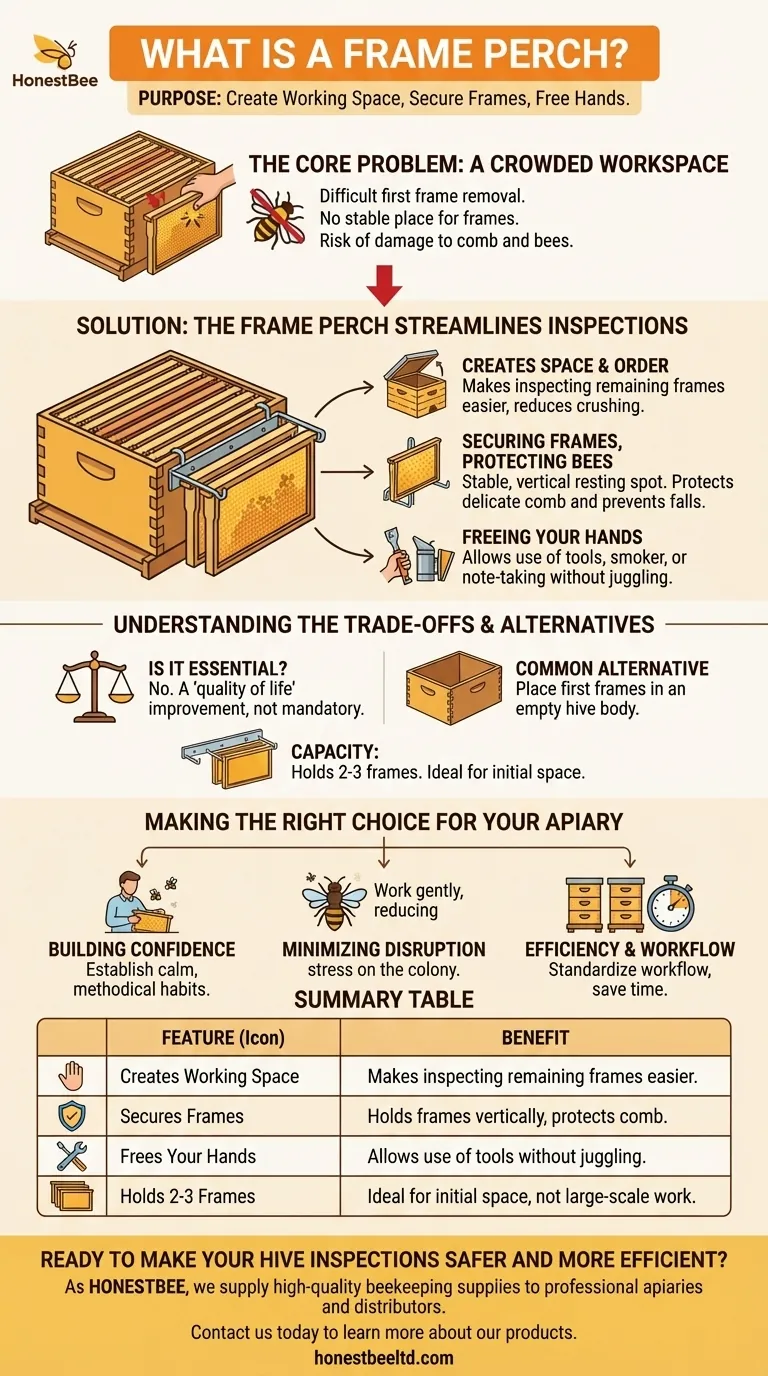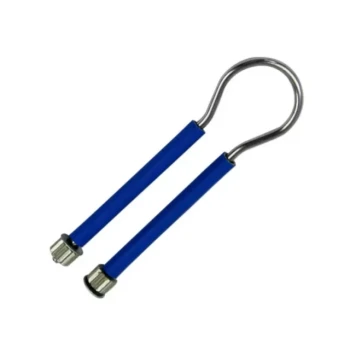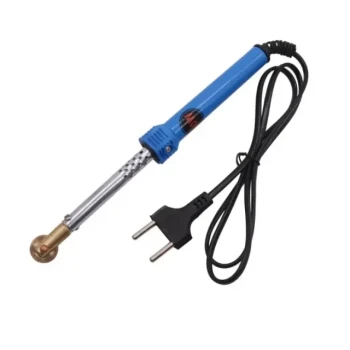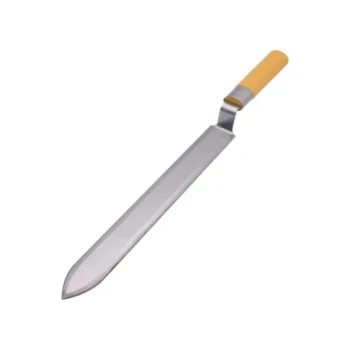In short, a frame perch is a simple metal bracket that hangs on the side of a hive body to temporarily hold frames during an inspection. Its purpose is to create working space within the hive and give you a secure place to set frames, freeing up your hands and preventing damage to your comb or harm to your bees.
A frame perch solves one of the most basic logistical challenges of a hive inspection: what to do with the first few frames you remove. By providing a stable, external resting place for frames, it transforms a cramped and precarious task into an orderly and efficient process.

The Core Problem: A Crowded Workspace
A standard 10-frame Langstroth hive box is designed for bee efficiency, not beekeeper convenience. When full of drawn comb, propolis, and bees, the frames are packed tightly together with precise bee space between them, leaving very little room to maneuver.
The Initial Challenge: Removing the First Frame
The most difficult part of many inspections is prying out the very first frame. Once it's free, the immediate question is where to put it. Placing it on the ground risks picking up pests or dirt, and leaning it against the hive is unstable.
The Risk of Damage and Disruption
An unsecured frame can easily be knocked over. This can damage delicate comb, spill precious nectar, or, most critically, crush bees—including the possibility of killing the queen if she is on that frame. This disruption adds stress to both the colony and the beekeeper.
How a Frame Perch Streamlines Your Inspection
A frame perch is a workflow tool designed specifically to mitigate these challenges. By hooking securely over the wall of the hive body, it acts as an extra pair of hands right where you need them.
Creating Space and Order
Once you remove the first one or two frames and hang them on the perch, you immediately create a significant gap inside the hive. This makes it far easier to separate and inspect the remaining frames without rolling or crushing bees between them.
Securing Frames, Protecting Bees
The perch provides a stable and secure resting spot. Frames hang vertically, just as they do inside the hive, protecting the comb structure. More importantly, it keeps the frames off the ground and in a fixed position, dramatically reducing the risk of them falling.
Freeing Your Hands for Critical Tasks
With frames safely hung on the perch, both of your hands are now free. You can more easily use your hive tool to manage propolis, operate a smoker, mark or catch a queen, or take notes and photos without juggling a heavy, bee-covered frame.
Understanding the Trade-offs
While incredibly useful, a frame perch is not a mandatory piece of equipment. Understanding its context helps you decide if it's right for you.
Is It an Essential Tool?
No. Many experienced beekeepers develop their own methods for managing frames. It is best classified as a "quality of life" improvement that makes inspections easier, faster, and safer, especially for those new to the craft.
Common Alternatives
A common alternative is to bring an empty hive body to the apiary and place it next to the hive being inspected. The first frame can then be carefully placed inside this empty box, providing a secure and contained location.
Capacity Limitations
Most frame perches are designed to hold only two or three frames. While this is more than enough to create working space, it is not a solution for holding a large number of frames during a major hive reconfiguration.
Making the Right Choice for Your Apiary
Ultimately, the value of a frame perch depends on your personal workflow and goals as a beekeeper.
- If your primary focus is learning and building confidence: A frame perch is an excellent investment to establish calm, methodical inspection habits from the start.
- If your primary focus is minimizing hive disruption: The order and safety a perch provides helps you work gently and deliberately, reducing stress on the colony.
- If your primary focus is efficiency across multiple hives: This tool is a must-have, as it standardizes your workflow and saves valuable time during each inspection.
It is a simple device that elegantly solves a common problem, turning a potential juggling act into a controlled procedure.
Summary Table:
| Feature | Benefit |
|---|---|
| Creates Working Space | Makes it easier to inspect remaining frames without crushing bees. |
| Secures Frames | Holds frames vertically to protect delicate comb and prevent falls. |
| Frees Your Hands | Allows you to use tools, smoker, or take notes without juggling frames. |
| Holds 2-3 Frames | Ideal for creating initial space, but not for large-scale hive work. |
Ready to make your hive inspections safer and more efficient?
As HONESTBEE, we supply high-quality beekeeping supplies and equipment to commercial apiaries and beekeeping equipment distributors through our wholesale-focused operations. A frame perch is just one example of the practical tools we provide to help professional beekeepers work smarter.
Contact us today to learn more about our products and how we can support your operation's success.
Visual Guide

Related Products
- Professional Stainless Steel Pry-Bar Hive Tool
- Multi-Function Plier-Style Frame Grip Hive Tool
- Professional Steel Pry-Bar Hive Tool with Painted Grip
- HONESTBEE Professional Multi-Functional Hive Tool with Ergonomic Wood Handle
- Professional 3-Bar Frame Grip with Integrated Hive Tool
People Also Ask
- What equipment and implements are needed by beekeepers besides the hives? Build Your Essential Beekeeping Toolkit
- Why is it recommended to have multiple hive tools on hand? Essential Tips for Efficient Beekeeping
- What are the parts of a hive tool? Master Your Hive Inspections with the Right Tool
- What safety precautions are advised for beekeeping with hive tools? Master Safe Handling for Calm, Efficient Hives
- What types of hive tools are available for beekeepers? Choose the Right Lever for Your Apiary



















